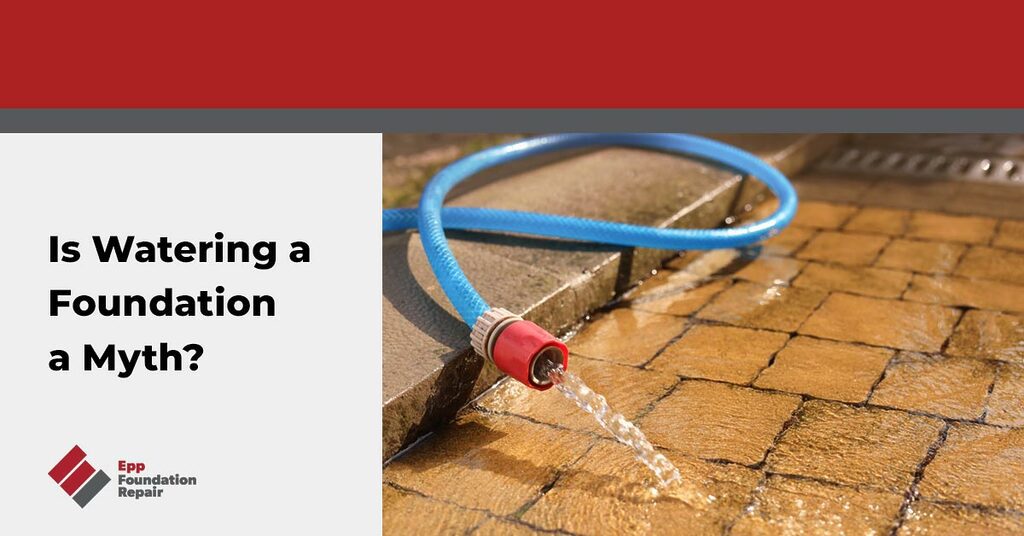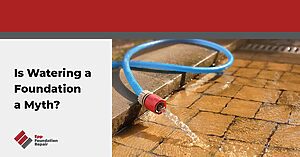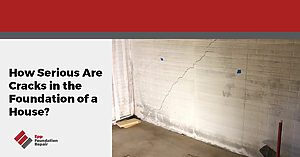How Hot Dry Weather Can Affect a Foundation
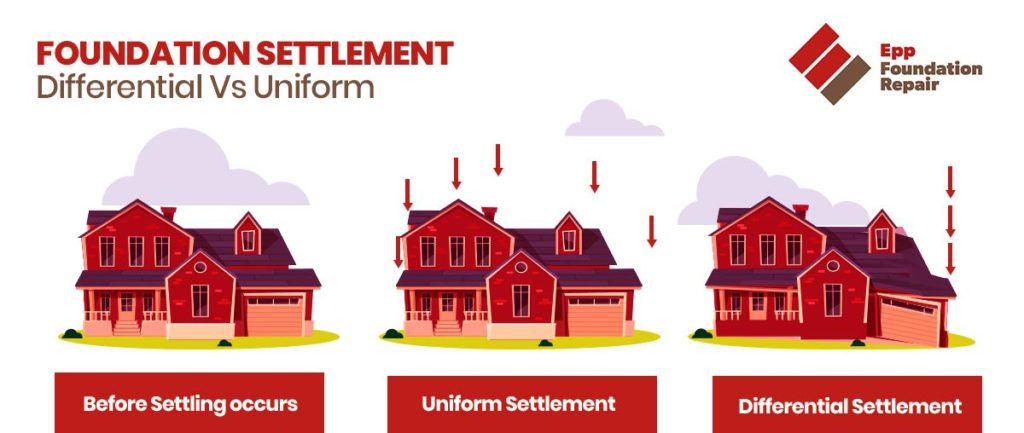
How Water Affects a Foundation
What is expansive soil?
What happens when a foundation is built on expansive soil?
What happens when a foundation is built on expansive soil during hot, dry weather?
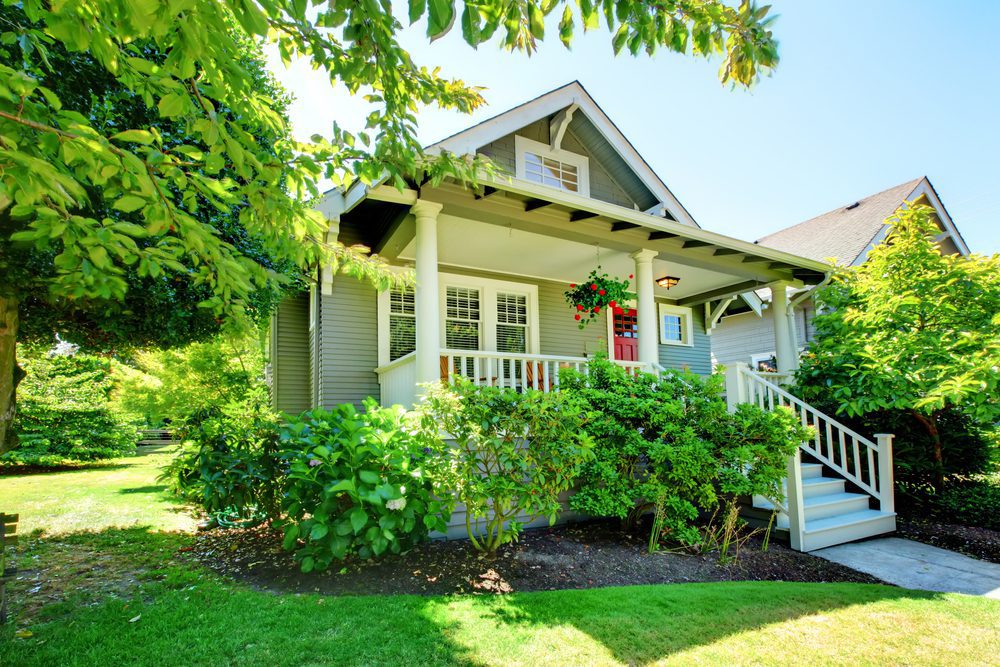
Is Watering a Foundation a Myth?
As mentioned above, if by “myth” you mean something incorrect or something to be avoided, no. We do not see watering a foundation as a myth. We see value in watering a foundation to keep expansive soil from drying out. However, you’ll need to use caution, and here’s why: If the soil around the foundation is already dried and cracked, watering the soil too close to the foundation could cause the water to run down the foundation wall. If there are any cracks in the wall, even invisible ones, water could get into your basement or crawl space.
Water at least 18 “-24” away from the foundation and let the water soak in laterally and vertically. Hopefully, this will avoid directly introducing too much water to the foundation.
Don’t water for too long. If you add too much water to the soil, you risk increasing the hydrostatic pressure to such a degree that it will put lateral pressure on the foundation. As we mentioned above, this could cause bowing or cracking. So, avoid watering for longer than one hour and make sure the spigot isn’t opened up all the way. You want a nice slow soak into the soil.
Things Homeowners Can Do That Will Help Prevent Foundation Problems
- Regrade your yard, if necessary – Since you don’t want water to drain toward and pool around your foundation, the yard should slope away from the foundation. If it doesn’t, have it regraded by a landscaping professional. You could also do this as a DIY project.
- Make sure you clean your gutters regularly – If your gutters are clogged, water will spill over the side of the house and soak into the soil around the foundation. You don’t want this since you’re trying to keep excess water away from the foundation.
- If your downspouts are too short, install extensions – Downspouts should channel water at least 10 feet from the foundation before releasing it. If yours are too short, extensions are inexpensive and easy to install.
- Install an underground downspout and a pop-up emitter – An underground downspout connects to the pop-up emitter situated several feet away from your foundation. When the pop-up emitter fills with water, it pops up and releases the water.
- Keep large trees at least 20 feet away from the foundation – Large trees can have extensive root systems bigger than their canopies — the tree roots “drink” water from the soil, creating voids under the foundation.
- Install a drain tile system – You can’t beat a drain tile system for controlling groundwater around a foundation. There are two types of drain tile systems, exterior, and interior. They both work by preventing excess water from building up in the soil. For more information about how they work, see How Does A Drain Tile System Work?
- Install a French drain in your yard – A French drain works similar to a drain tile system, except it’s situated in your yard instead of next to your foundation. It involves placing a perforated drainage pipe in a shallow trench and covering it with gravel and soil. Excess water flows into the pipe and gets released away from the foundation.
- Ensure your plumbing isn’t leaking – Undetected plumbing leaks can add quite a bit of water to the soil around the foundation.

